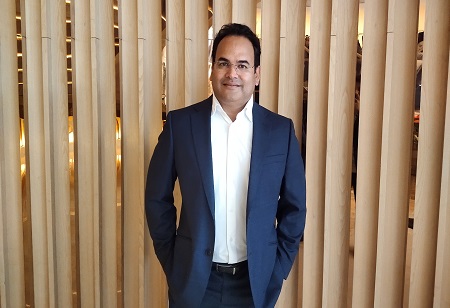
In an interaction with Industry Outlook, Sandeep Raut, Chief Operating Officer, Laguna Clothing shares his insights on the current sustainability practices in the clothing & textile manufacturing industry and various aspects.
A ‘Gold Medalist’ in Textile Engineering with a PG Diploma in Marketing from Symbiosis Center for Distance Learning, Sandeep has been in the textile and apparel industry for over two decades now. Prior to joining Laguna in 2011, he handled key roles across companies such as Bharat Silks, Morarjee Textiles, and Oswal F. M. Haemmerle Textiles.
How are high-end clothing brands integrating sustainability into their manufacturing processes and supply chains?
A lot of awareness has been created post covid because today’s gen-z population has profound awareness about sustainability and looks at fashion as a major cause of pollution. It is a known fact that the textile and clothing industry generates the highest amount of carbon emissions. Thus, brands are now embracing sustainability initiatives and partnering with their manufacturers, in addition to taking-up various certifications like LEEDS, Higg Index, and many others. Brands and retailers are also appreciating this and engaging with the manufacturers who are able to provide them with products that are sustainability certified. As a result, many companies and brands today have made sustainability as their brand identity. Also, regenerative agriculture too is gaining widespread prominence in recent times.
In addition to the above, transparency and traceability of sustainability also is important because of the rampant greenwashing observed in the industry.
What are some of the measures high-end clothing brands can undertake to minimize the negative environmental impact of their products?
Having a sustainable sourcing practice helps a lot in this regard. Brands like Tommy Hilfiger and Calvin Klein have completely moved to use organic cotton, where every product of theirs is made only using cotton that is organically certified. Also, this cotton is grown through farming practices that do not harm the soil layers and the entire natural ecosystem. Additionally, the manufacturing process is designed to completely operate on clean energy, which is a very big step towards embracing sustainable practices.
How are sustainable materials like organic cotton and recycled polyester being used more frequently in high-end fashion? How do these materials affect the design process of clothing brands?
A lot of clothing brands are moving towards using organic cotton today and it can be very easily incorporated into any kind of fashion. Thus, recycled polyester and a few other materials are being blended with organic cotton as well. One must understand that fashion designs, patterns, or styles are largely unaffected by using sustainable materials, thus making it easy to incorporate sustainable fabrics and materials in the manufacturing process.
How can high-end clothing brands incorporate circular economy practices or recycling programs to reduce waste and increase their products’ lifespan?
While some brands and companies are renting-out clothing, they are also selling used clothing. Also, there are many brands that are trying to practice circular fashion by recycling waste material and making it into their own products.
Additionally, waste clothing and fabric can also be reused in making other products such as door mats, etc. At Laguna Clothing, whatever fabric and paper waste is generated is recycled into paper, which is then used in the packaging process. Incorporating such practices not only benefits the organization by cutting-down operational costs but also earns their customers’ appreciation as well.
What role does communication play for high-end fashion brands to effectively portray their sustainability practices to their consumers?
Communication is a very easy aspect in today’s tech-driven world. There is a lot of communication happening on social media platforms such as LinkedIn, Instagram, and YouTube, wherein a lot of high-end, sophisticated content is being developed to communicate with customers and other stakeholders. As a result, being eco-friendly is the current and most happening trend around the world.
Lastly, give us a brief correlation between affordable pricing and sustainable fashion products.
Given the additional expenses associated with the implementation practices, it is very easy for high-end fashion brands to incorporate sustainability practices with an assurance of the materials being 100 percent organic. However, when it comes to smaller and medium size brands and retailers and other lower-tier brands, they might feel a bit burdened to afford these costs and thus rely on 50 percent cotton and similar other materials. Thus, every brand irrespective of its size and growth stage, is contributing towards sustainability. Moreover, recycled polyester is not that expensive and still does the job as far as sustainable fashion is concerned. So it’s more the will and sincere efforts from the brands that are driving sustainability in fashion. More than the brands, it is the consumer who is demanding this, which has resulted in sustainability being not just an option, but a norm for brands to woo their customers. Thus, it is paramount to realize that sustainability comes at a price, and it is definitely cheap.
We use cookies to ensure you get the best experience on our website. Read more...